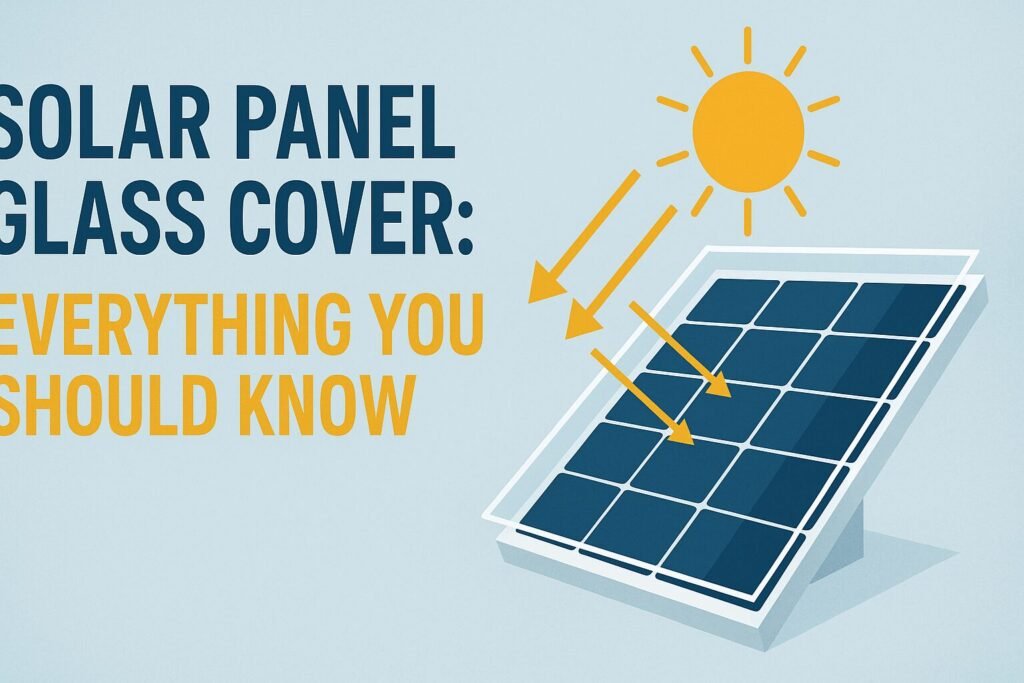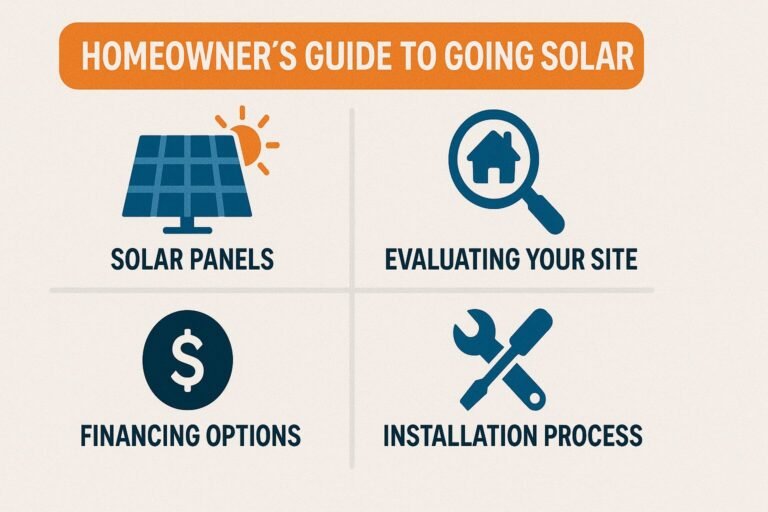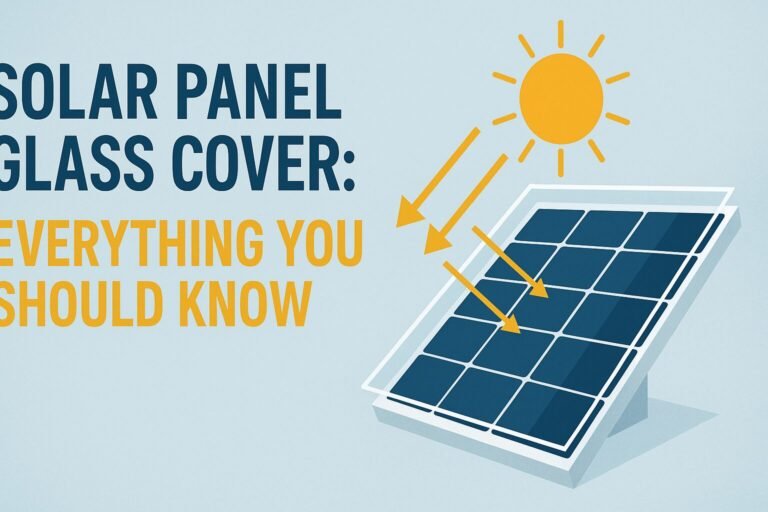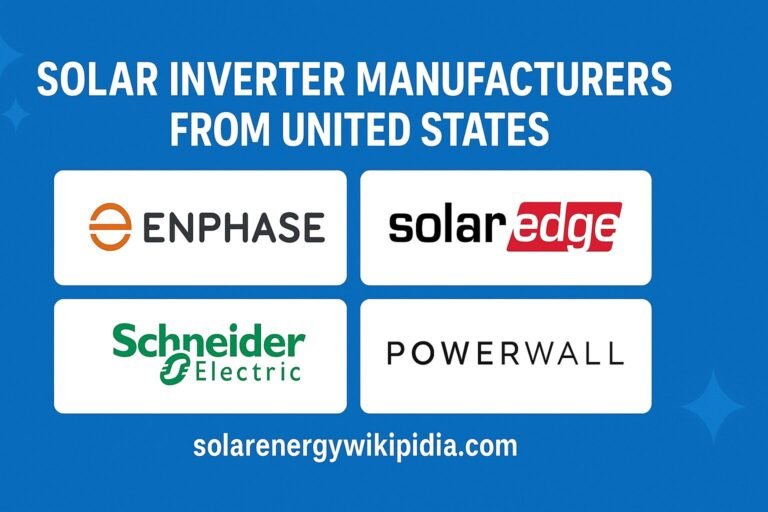
Discover everything about solar panel glass covers – types, benefits, maintenance, and costs. Essential guide for maximizing your solar investment’s protection and efficiency.
Solar panels are a valuable long-term investment in the future of your home. But here’s what most homeowners don’t realize: the glass cover protecting those precious photovoltaic cells is just as crucial as the technology beneath it.
Think of it this way – would you drive a luxury car without a windshield? That’s essentially what unprotected solar panels face every single day.
Table of Contents
Quick Reference: Solar Panel Glass Cover Essentials
| Aspect | Details |
| Primary Material | Tempered low-iron glass |
| Typical Thickness | 3.2mm – 4mm |
| Light Transmission | 91-95% |
| Lifespan | 20-25 years |
| Replacement Cost | $150-$400 per panel |
| Maintenance Frequency | 2-4 times annually |
What Exactly Is a Solar Panel Glass Cover?

Simply put, solar panel glass covers are the transparent protective barriers that shield your photovoltaic cells from the elements. Calling them “just glass” is like calling a smartphone “just a phone”—it overlooks all the advanced technology inside.
These covers are engineered marvels. They’re specifically designed to maximize light transmission while providing bulletproof protection against Mother Nature’s worst tantrums.
Most quality solar panels use tempered low-iron glass. This isn’t your grandmother’s window glass – it’s significantly stronger and contains minimal iron content that could interfere with light transmission.
Types of Solar Panel Glass Covers
Tempered Glass Covers
This is the gold standard. Tempered glass is strengthened through a specialized heating and cooling process, making it four to five times more durable than standard glass.
When tempered glass breaks (which is rare), it crumbles into small, relatively harmless pieces rather than dangerous shards.
Anti-Reflective Coated Glass
Certain manufacturers apply advanced coatings to minimize reflection and enhance light absorption, increasing energy output by 2–4%.
However, these specialized coatings come with a premium price tag that makes many homeowners think twice.
Textured Glass Surfaces
Textured glass helps scatter light more effectively across the solar cells. This technology particularly shines in areas with indirect sunlight or frequent cloud cover.
Why Solar Panel Glass Covers Are More Important Than You Realize
Protection Against Environmental Hazards
Your solar panels constantly endure harsh conditions from the elements. Hailstones the size of golf balls, hurricane-force winds, and temperature swings that would make your head spin.
Quality glass covers act as the first line of defense. They’ve been tested to withstand hail impacts at speeds exceeding 50 mph.
Maximizing Energy Efficiency
Here’s where things get interesting. The transparency of your glass cover directly impacts your energy production.
Premium low-iron glass allows 91-95% of sunlight to pass through. Cheaper alternatives might only achieve 85-88% transmission. That difference translates to real money over your system’s 25-year lifespan.
Weather Resistance
Solar panels must endure decades of exposure to UV radiation, temperature cycling, and moisture. The glass cover prevents these elements from degrading the sensitive electronics beneath.
Without proper protection, your expensive solar cells would deteriorate within months rather than decades.
The Economics of Solar Panel Glass Covers
Initial Investment Considerations
Quality glass covers typically add $50-$150 to each panel’s cost. For a typical residential system with 20 panels, that’s an additional $1,000-$3,000.
This might seem steep initially. However, consider the alternative: replacing damaged panels costs significantly more.
Long-term Financial Benefits
Protected panels maintain their efficiency longer. While unprotected panels might lose 15-20% efficiency over 20 years, well-protected panels typically lose only 8-12%.
This efficiency retention translates to thousands of dollars in additional energy savings over your system’s lifetime.
Maintenance: Keeping Your Glass Covers Pristine
Regular Cleaning Schedule
Dirty glass covers can cut energy production by 15–25%—essentially wasting potential savings.
Most experts suggest cleaning your panels 2 to 4 times a year, depending on local conditions.
Professional vs. DIY Cleaning
While you can clean panels yourself, professional services ensure thorough cleaning without risking damage. Professional cleaning typically costs $150-$300 for an average residential system.
Warning Signs of Damage
Watch for cracks, chips, or persistent stains that won’t come off with normal cleaning. These problems need prompt attention to avoid further damage.
Common Myths Debunked
Myth: All Solar Glass Is the Same
Absolutely false. Glass quality varies dramatically between manufacturers. Cheap glass can significantly impact your system’s performance and longevity.
Myth: Glass Covers Don’t Need Maintenance
Wrong again. Even the best glass covers require regular cleaning and inspection to maintain optimal performance.
Myth: Thicker Glass Is Always Better
Not necessarily. While thicker glass offers more protection, it can also reduce light transmission. The goal is to strike the perfect balance.
Future Innovations in Solar Glass Technology
The solar industry continues pushing boundaries. Self-cleaning glass coatings, enhanced light-trapping textures, and even solar glass that generates electricity are all emerging technologies.
These innovations promise to make solar energy even more efficient and cost-effective in the coming years.
FAQs: Solar Panel glass cover: Everything you should know (2025)
How often should I replace my solar panel glass covers?
Quality glass covers should last 20-25 years with proper maintenance. Replacement is typically only necessary if damage occurs.
Can I install glass covers on existing panels?
Solar panel glass covers are integrated during manufacturing. You cannot add them to existing panels, but you can replace damaged covers.
Do glass covers affect warranty coverage?
Most manufacturers include glass covers in their standard warranties. However, damage caused by poor maintenance or severe weather may not be covered.
What poses the greatest risk to solar panel glass?
Hail damage is the most common cause of glass cover failure, followed by thermal stress from rapid temperature changes.
Are there alternatives to glass covers?
Some manufacturers experiment with advanced plastics, but glass remains superior for durability and light transmission.






